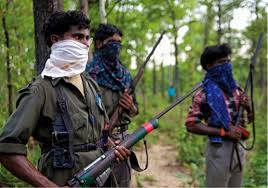Not the only path: On acting against the Maoists
A purely militaristic solution against the Maoists can also lead to tribal repression
In two operations in Bastar, Chhattisgarh on Thursday (March 20, 2025), 30 alleged “Maoists” were gunned down taking the number of Maoists killed in operations, according to security forces, to over 100 this year. In its 20-plus years of existence as a unified political force, the Communist Party of India (Maoist) finds itself in its most challenging period. The insurgency had peaked in the mid- to late-2000s, when the then government termed it as the “greatest security threat” to the nation, and has since then been restricted to the forested areas of southern Chhattisgarh and contiguous areas. This weakening was never in doubt — the Maoists profess an anachronistic political strategy of adopting violent means to achieve their goals, and in the long war of attrition against the Indian state, have subjugated their “mass” work to militarism. This has resulted in the erosion of support bases in places that were built where and when the agencies of the Indian state were weak. With successive central governments seeking to address the development lacunae in governance in such tribal areas and adopting a take-no-prisoners approach to tackle the Maoists’ guerilla warfare, their threat has been significantly whittled down. In the anti-insurgency strategy, however, the police and paramilitary agencies have made errors — the Salwa Judum campaign is one example and it is still not clear whether the anti-Maoist operations that have led to claims of many casualties among the insurgents include tribals caught in the crossfire.
If the Indian state — the Union and State governments — believes that the Maoist threat can be extinguished using a purely militaristic approach, then this is not borne out from experiences elsewhere against similar insurgencies. Ideologies such as Maoism, even if anachronistic and misplaced in the current socio-political milieu, tend to take deeper roots when repressions peak and a purely militaristic solution that envisages a violent end to the insurgency has the possibility of causing disenchantment among tribals. A better solution would be to involve civil society in working out a truce and sending a clear message for the Maoists to give up their violent path with incentives for rehabilitation. The Maoists have shown little inclination in doing so, being stubborn in upholding their flawed understanding of the Indian state and the people. The loss of lives, that includes tribals either coerced into the violence due to repression that they face or simply caught in the crossfire, should compel them to change tack, if they are truly concerned about the lot of the tribal people they claim to stand up for. The experience of the Revolutionary Armed Forces of Colombia (FARC) or that of the Nepali Maoists, who gave up their insurgent campaigns, suggests that such a pathway is possible.
